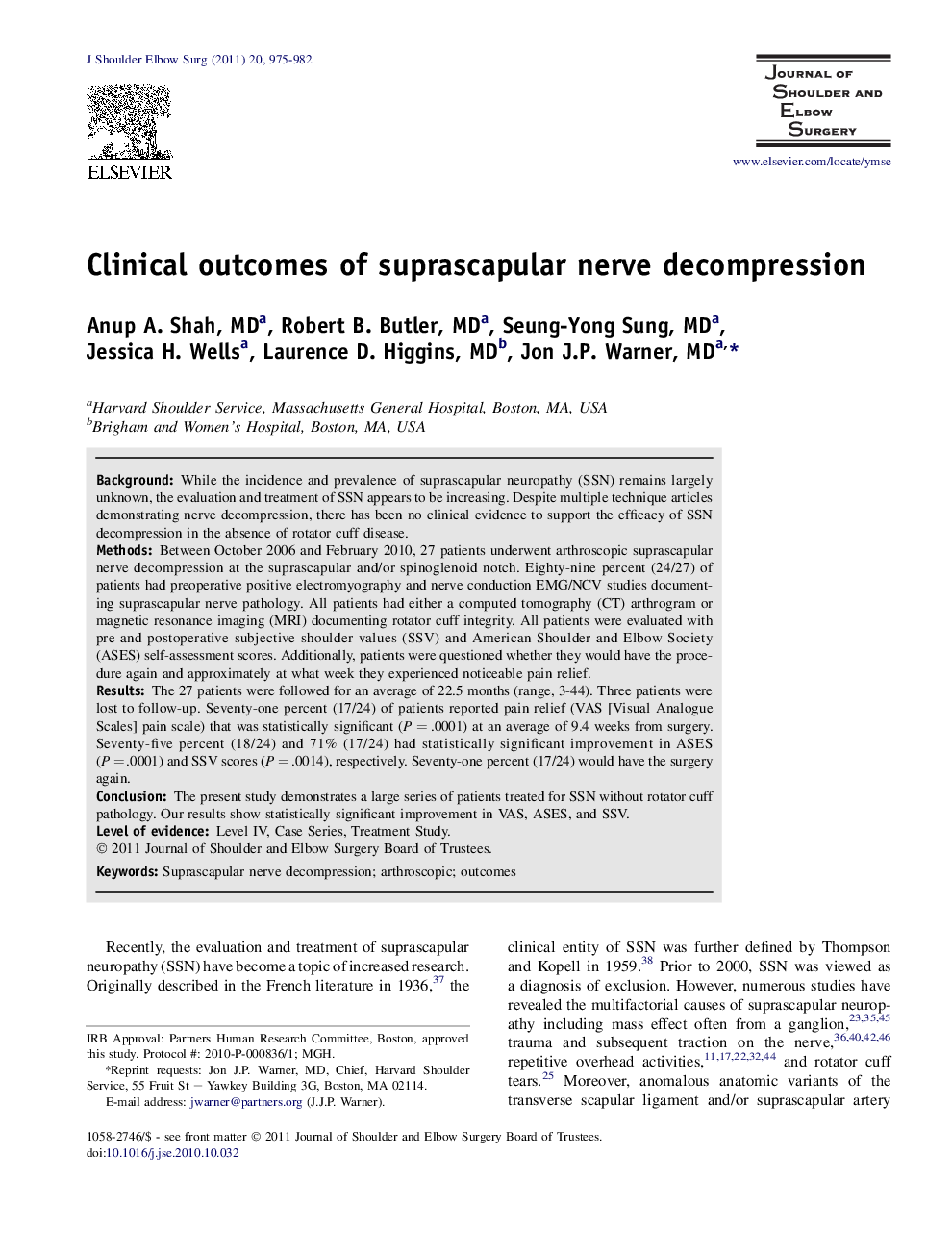| Article ID | Journal | Published Year | Pages | File Type |
|---|---|---|---|---|
| 4074464 | Journal of Shoulder and Elbow Surgery | 2011 | 8 Pages |
BackgroundWhile the incidence and prevalence of suprascapular neuropathy (SSN) remains largely unknown, the evaluation and treatment of SSN appears to be increasing. Despite multiple technique articles demonstrating nerve decompression, there has been no clinical evidence to support the efficacy of SSN decompression in the absence of rotator cuff disease.MethodsBetween October 2006 and February 2010, 27 patients underwent arthroscopic suprascapular nerve decompression at the suprascapular and/or spinoglenoid notch. Eighty-nine percent (24/27) of patients had preoperative positive electromyography and nerve conduction EMG/NCV studies documenting suprascapular nerve pathology. All patients had either a computed tomography (CT) arthrogram or magnetic resonance imaging (MRI) documenting rotator cuff integrity. All patients were evaluated with pre and postoperative subjective shoulder values (SSV) and American Shoulder and Elbow Society (ASES) self-assessment scores. Additionally, patients were questioned whether they would have the procedure again and approximately at what week they experienced noticeable pain relief.ResultsThe 27 patients were followed for an average of 22.5 months (range, 3-44). Three patients were lost to follow-up. Seventy-one percent (17/24) of patients reported pain relief (VAS [Visual Analogue Scales] pain scale) that was statistically significant (P = .0001) at an average of 9.4 weeks from surgery. Seventy-five percent (18/24) and 71% (17/24) had statistically significant improvement in ASES (P = .0001) and SSV scores (P = .0014), respectively. Seventy-one percent (17/24) would have the surgery again.ConclusionThe present study demonstrates a large series of patients treated for SSN without rotator cuff pathology. Our results show statistically significant improvement in VAS, ASES, and SSV.
